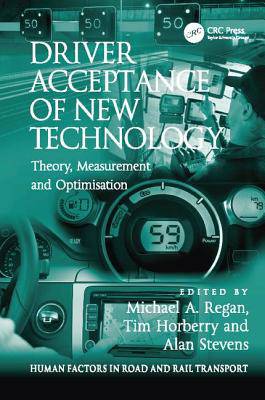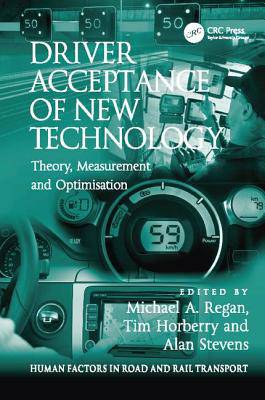
- Retrait gratuit dans votre magasin Club
- 7.000.000 titres dans notre catalogue
- Payer en toute sécurité
- Toujours un magasin près de chez vous
- Retrait gratuit dans votre magasin Club
- 7.000.0000 titres dans notre catalogue
- Payer en toute sécurité
- Toujours un magasin près de chez vous
Driver Acceptance of New Technology
Theory, Measurement and Optimisation
109,95 €
+ 219 points
Description
Acceptance of new technology and systems by drivers is an important area of concern to governments, automotive manufacturers and equipment suppliers, especially technology that has significant potential to enhance safety. To be acceptable, new technology must be useful and satisfying to use. If not, drivers will not want to have it, in which case it will never achieve the intended safety benefit. Even if they have the technology, drivers may not use it if it is deemed unacceptable, or may not use it in the manner intended by the designer. At worst, they may seek to disable it. This book brings into a single edited volume the accumulating body of thinking and research on driver and operator acceptance of new technology. Bringing together contributions from international experts from around the world, the editors have shaped a book that covers the theory behind acceptance, how it can be measured and how it can be improved. Case studies are presented that provide data on driver acceptance of a wide range of new and emerging vehicle technology. Although driver acceptance is the central focus of this book, acceptance of new technology by operators in other domains, and across cultures, is also investigated. Similarly, perspectives are derived from domains such as human computer interaction, where user acceptance has long been regarded as a key driver of product success. This book comes at a critical time in the history of the modern motor vehicle, as the number of new technologies entering the modern vehicle cockpit rapidly escalates. The goal of this book is to inspire further research and development of new vehicle technology to optimise user acceptance of it; and, in doing so, to maximise its potential to be useful, satisfying to use and able to save human life.
Spécifications
Parties prenantes
- Editeur:
Contenu
- Nombre de pages :
- 384
- Langue:
- Anglais
- Collection :
Caractéristiques
- EAN:
- 9781138077034
- Date de parution :
- 31-03-17
- Format:
- Livre broché
- Format numérique:
- Trade paperback (VS)
- Dimensions :
- 156 mm x 234 mm
- Poids :
- 535 g

Les avis
Nous publions uniquement les avis qui respectent les conditions requises. Consultez nos conditions pour les avis.





